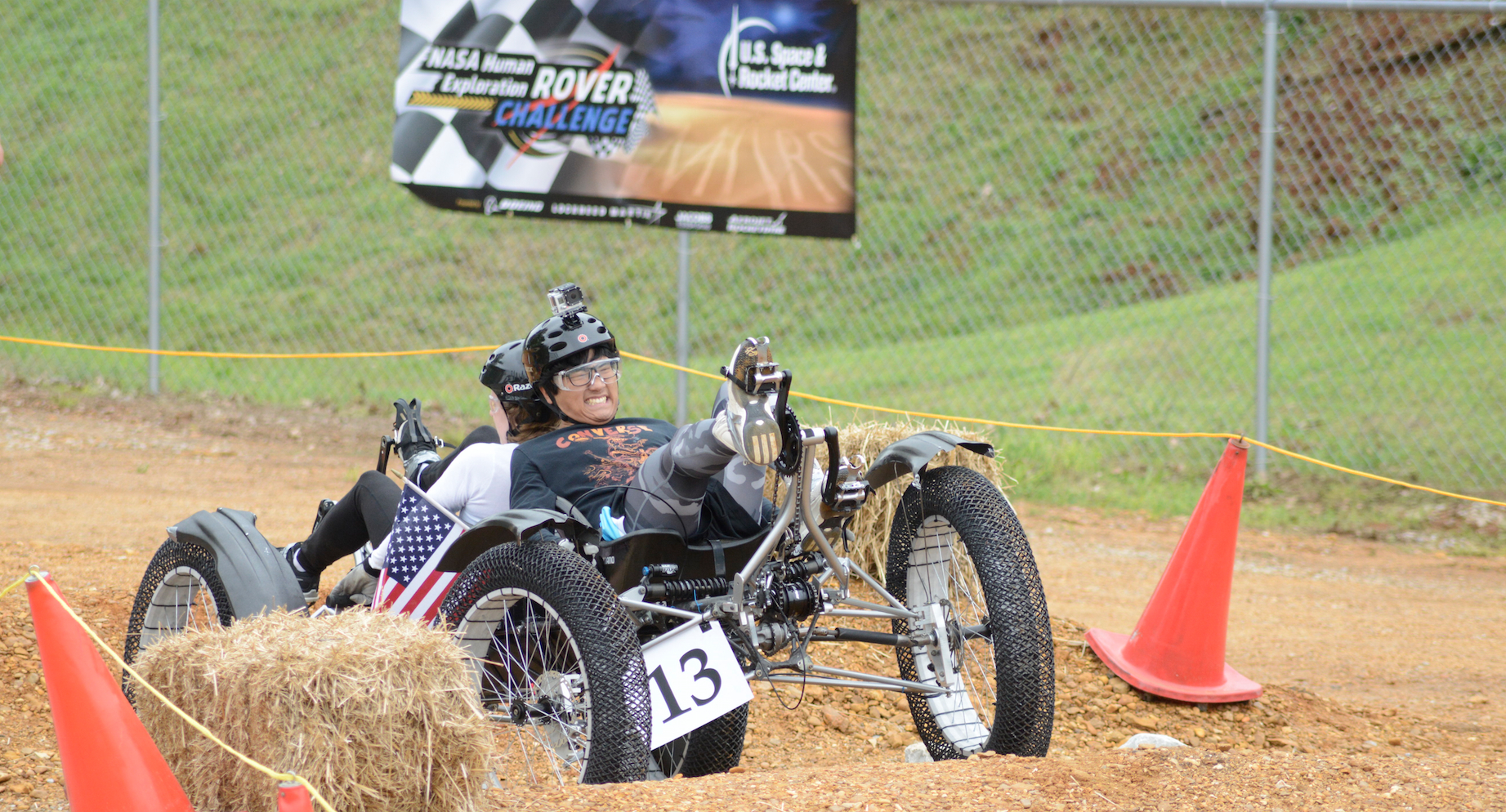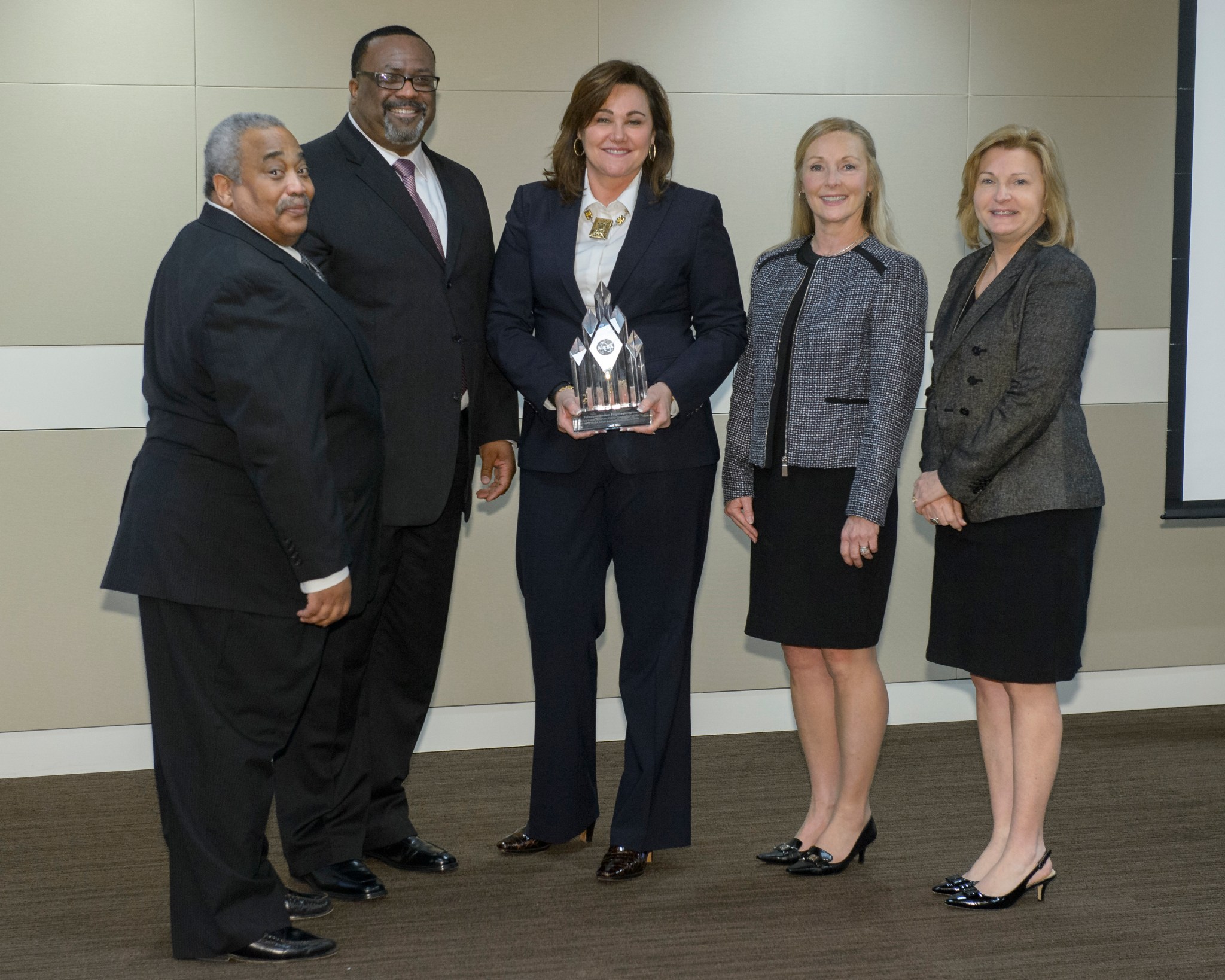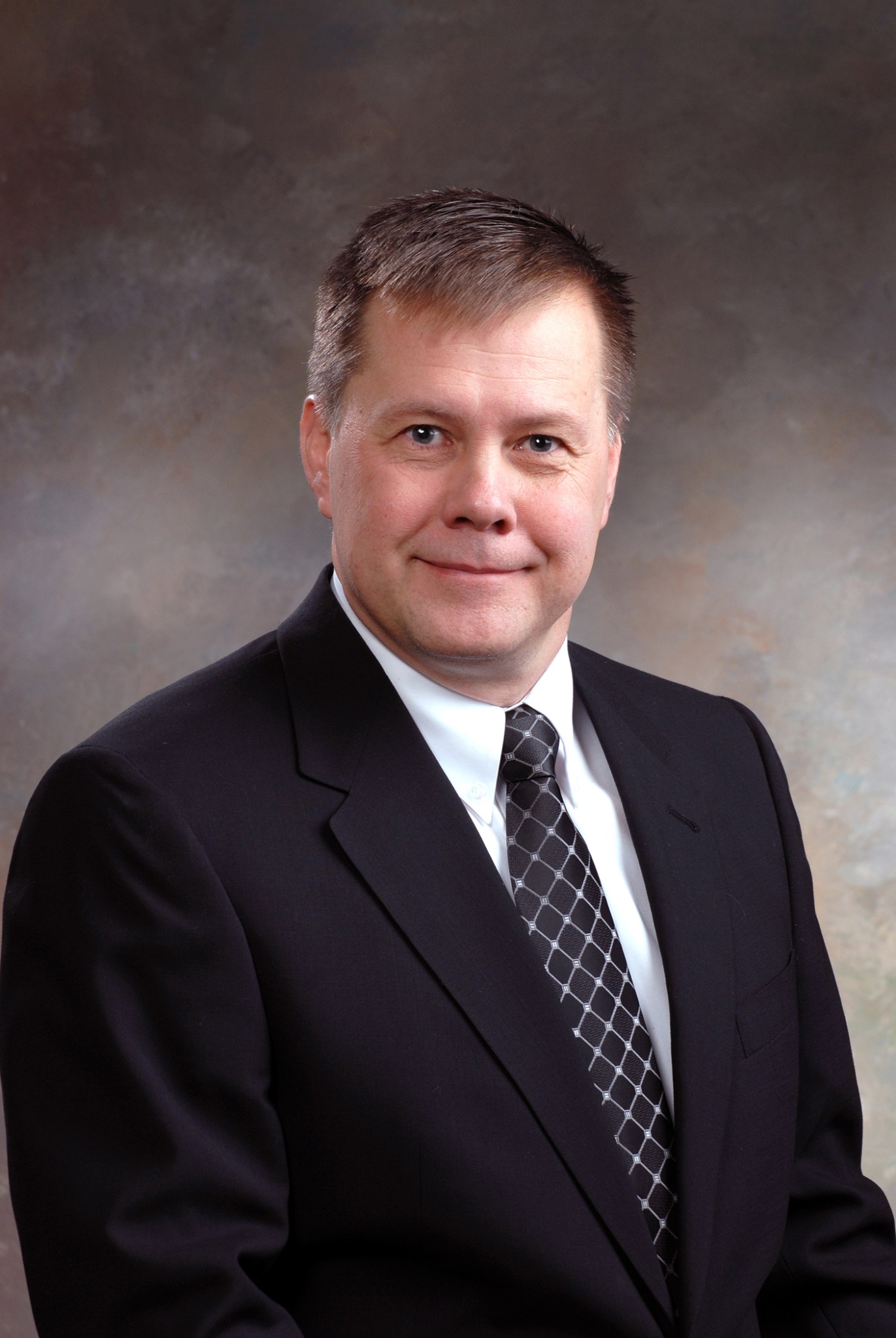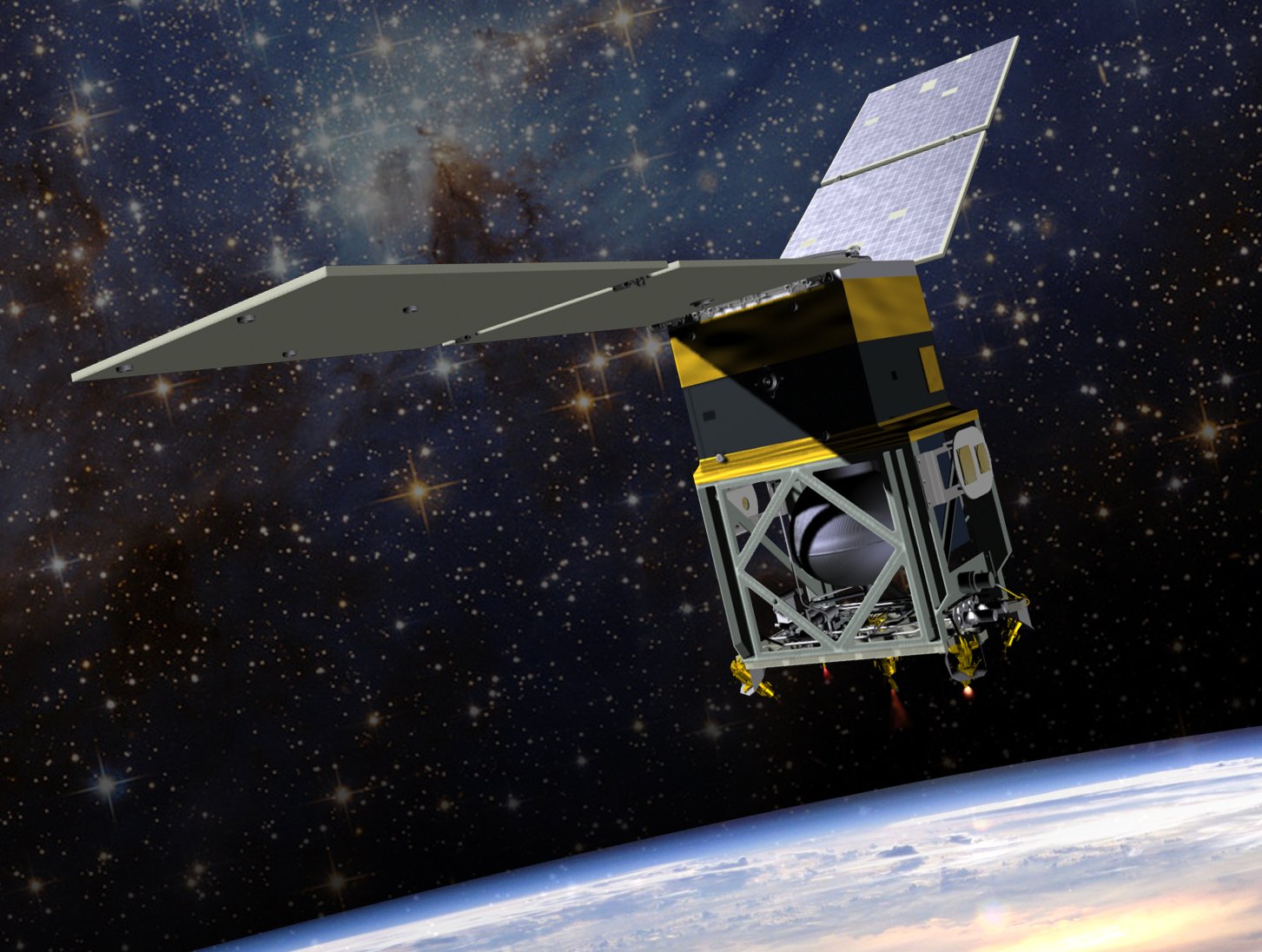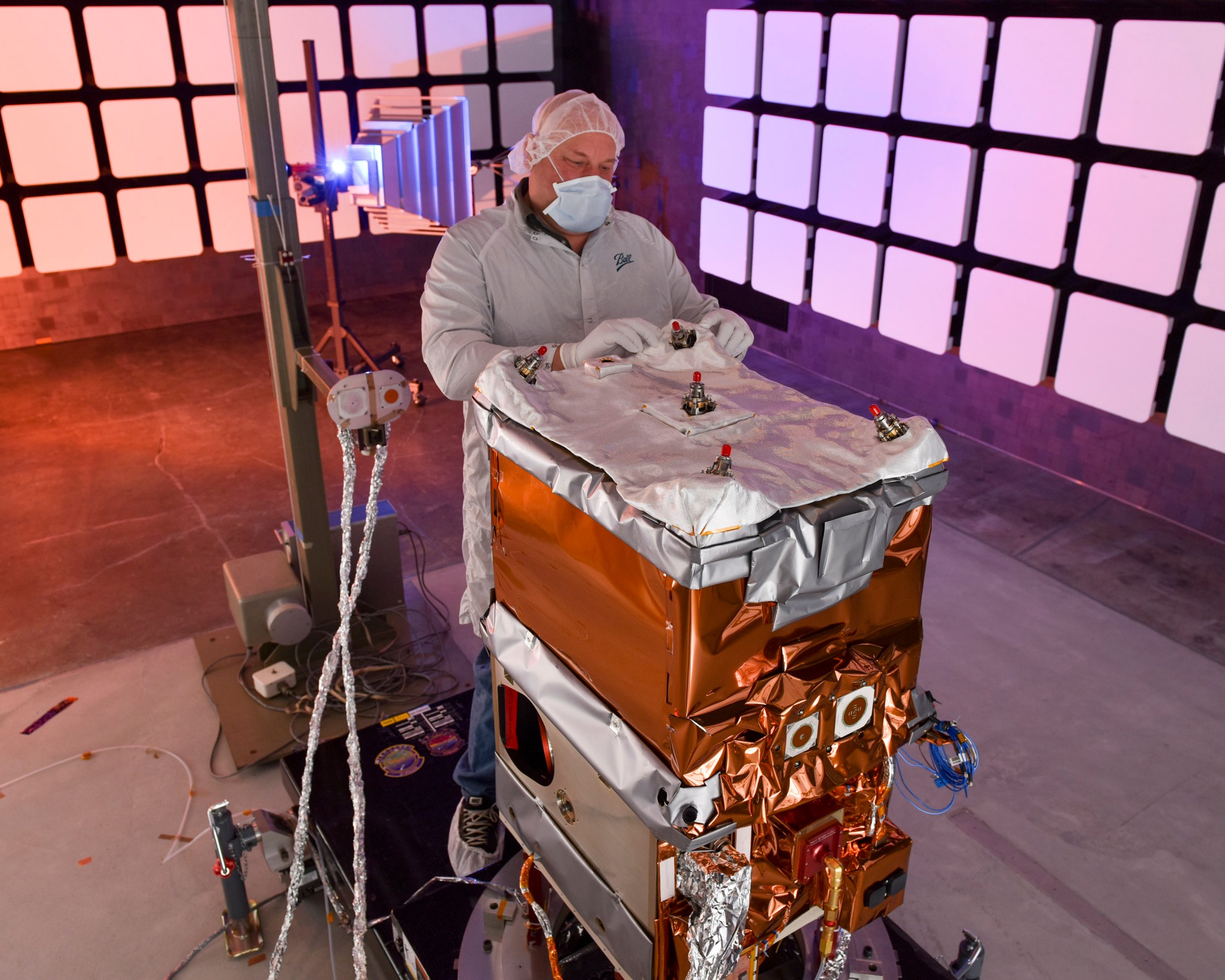In This Week’s Star
- Rover Challenge Returns to Rocket City with Two New Challenges, April 8-9
- NASA Recognizes Marshall Center Support Teams, Civil Servants with Small Businesses Industry Awards
- NASA Spacecraft to Test ‘Green’ Propellant Passes Major Pre-flight Milestone
- Marshall Teams Earn NASA Systems Engineering Excellence Awards
- Notable Speakers Conclude Marshall’s Women’s History Month Events
- Simplified Acquisitions Transitioning to the NSSC
- This Week in NASA History: STS-37 Crew Deploys Compton Gama-Ray Observatory — April 8, 1991
- Milestone Completion of NASA ‘Green’ Mission Featured on ‘This Week @NASA’
- Obituaries
Rover Challenge Returns to Rocket City with Two New Challenges, April 8-9
By Christopher Blair
Ready, set, rove! NASA’s Human Exploration Rover Challenge will roll to a start this weekend at the U.S. Space & Rocket Center, bringing two new challenges.
Come join the fun and watch live, competitive racing as nearly 80 student teams from around the world race human-powered rovers on a space-themed obstacle course.
Though it’s fun for all, Rover Challenge is serious business. And like last year, the obstacle course isn’t for the faint of heart, often bringing drivers to their knees, literally.
The daunting three-quarter-mile-long course simulates terrain found on distant planets, asteroids or moons. Plus, the course winds in, through, on and around exhibits of full-scale rockets and space vehicles at the rocket center.
Because many obstacles are difficult to traverse, students must — in true engineering fashion — employ real-world problem-solving techniques to best research, design and build a rover capable of making it to the finish line.
Yet not every team makes it that far. In the months before the race, teams must consider best practices to conquer the course, such as gear ratio, stable suspensions, sturdy frames and more.
Sounds difficult, sure, but that’s not all. This year’s event adds two new and important changes. First, teams must make their own wheels. Yes, homemade wheels.
Any component contacting the course surface for traction and mobility, including, but not limited to wheels, tracks, treads or belts cannot be purchased or considered an “off-the-shelf” product. Plus, as in years past, teams are not allowed to incorporate inflated or un-inflated pneumatic tires.
The second new feature is an optional “Sample Return” challenge where teams attempt to collect four samples — liquid, small pebbles, large rocks and soil samples — using a mechanical arm or grabber they design and build.
An awards ceremony will wrap up the event April 9 at 5 p.m. in the Davidson Center for Space Exploration. Corporate sponsors will present awards for best rover design, rookie teams, pit crews and other accomplishments.
If you can’t make it in person, both race days will be broadcast on Marshall’s Ustream Website. Plus, join the online digital conversation for race updates on the Rover Challenge Twitter account, @RoverChallenge.
Rover Challenge — hosted by NASA’s Marshall Space Flight Center and the U.S. Space & Rocket Center and managed by Marshall’s Academic Affairs Office – is a hands-on, experiential activity for students to solve similar engineering problems faced by NASA’s workforce. Students gain meaningful experiences, feedback and encouragement to pursue degrees and careers in the STEM fields of science, technology, engineering and mathematics.
In the end, everyone has a great time racing, learning about future NASA missions and making new friends, some from distant lands. The international contingent is strong this year with teams from Italy, Germany, India, Mexico and Russia, as well as “local” teams from the United States and Puerto Rico — all making Rover Challenge a true international success.
Blair, an ASRC Federal/Analytical Services employee, supports the Office of Strategic Analysis & Communications
NASA Recognizes Marshall Center Support Teams, Civil Servants with Small Businesses Industry Awards
By Christopher Blair
Several awards were presented to contracting companies and civil servants affiliated with NASA’s Marshall Space Flight Center during the 2016 Spring NASA Industry Forum meeting March 8 at NASA Headquarters, hosted by the agency’s Office of Small Business Programs. The awards honor companies, teams and individuals having demonstrated success and sustainable achievement toward meeting NASA’s aerospace missions.
Winning the Large Business Prime Contractor of the Year was Teledyne Brown Engineering of Huntsville, awarded for its support of the International Space Station Program Office at NASA’s Johnson Space Center under the Marshall Mission Operations & Integration Contract. During the past fiscal year, its team provided more than 8,600 continuous hours of real-time science operations support to the space station.
The Small Business Prime Contractor of the Year was awarded to Dynetics Technical Services of Huntsville, for providing enterprise information technology services, helping NASA continue critical research. Its support includes IT planning and policy, along with a host of Web, computing and audio-visual support on the Marshall Information Technology Services (MITS) contract.
Receiving the Small Business Advocate Award for Program Person of the Year was Robert Devlin, deputy director of Marshall Center Operations.
“It is an honor to have two Marshall prime contractors receive two of the three FY 2015 industry awards,” said David Brock, small business specialist at Marshall. “Both Teledyne Brown Engineering and Dynetics Technical Services are strong supporters of NASA’s Mission and the NASA Small Business Programs. Along with the support Devlin provides in his role as the Office of Center Operations small business technical coordinator, this is what makes Marshall’s Small Business Program so successful.”
The NASA Small Business Industry Awards was implemented in 2008 by Glenn Delgado, associate administrator of NASA’s Office of Small Business Programs. Each fiscal year, the SBIA awards recognize one outstanding Small Business Prime Contractor, Small Business Subcontractor, and Large Business Prime Contractor for outstanding efforts in support of NASA’s mission. The winners are chosen from nominations received by all 10 NASA centers.
Established in 2007, the Small Business Alliance helps small businesses pursue NASA procurement and subcontracting opportunities. NASA civil service employees nominate eligible individuals and organizations for awards. A panel of NASA business procurement officials evaluates each nominee’s cost-conscious business practices, innovative processes and adoption of new technologies, as well as their overall contributions to NASA’s mission and the agency’s Small Business Program.
Blair, an ASRC Federal/Analytical Services employee, supports the Office of Strategic Analysis & Communications.
NASA Spacecraft to Test ‘Green’ Propellant Passes Major Pre-flight Milestone
By Kenneth Kesner
Like all rocket engines, the small thrusters that a spacecraft or satellite fires to maintain or change positions need fuel. Currently, many use hydrazine — a toxic and corrosive fuel that requires special handling and equipment.
NASA’s Green Propellant Infusion Mission recently took another major step toward demonstrating the capabilities of a new propellant that is safer to handle on the ground and more efficient for thrusters in space. The GPIM spacecraft has passed a major flight readiness milestone marking the successful completion of functional and environmental testing of its systems and software, and is on track for launch in early 2017.
“We are increasingly reliant on satellites for communications, for monitoring weather and conditions on Earth and for exploration of the universe,” said Steve Jurczyk, associate administrator of NASA’s Space Technology Mission Directorate. “It’s important that we develop technology that increases protections for launch personnel and the environment, and that has the potential to reduce costs.”
GPIM is part of a portfolio of technology demonstration flight and ground projects led by NASA teams and industry partners across the country, managed by the Technology Demonstration Missions program office at NASA’s Marshall Space Flight Center. The development of new technologies is key to the exploration of space.
GPIM will demonstrate the practical capabilities of a hydroxyl ammonium nitrate based fuel/oxidizer propellant blend, known as AF-M315E, developed by the U.S. Air Force Research Laboratory at Edwards Air Force Base in California. The new propellant is 45-percent denser than hydrazine, meaning more of it can be stored in containers of the same volume. Coupled with a greater Isp — the efficiency with which a rocket engine uses propellant for thrust — than hydrazine, this means there is approximately a 50-percent increase in spacecraft maneuvering capability for a given volume. AFM-315E also has a lower freezing point than hydrazine, requiring less spacecraft power to maintain its temperature.
AF-M315E, less toxic than traditional chemical fuels like hydrazine, requires fewer handling restrictions and less special equipment. That could shorten launch processing times, resulting in lowered costs.
“There are always going to be situations in which it makes sense to use hydrazine fuel,” said Chris McLean, principal investigator for GPIM and staff consultant at Ball Aerospace and Technologies Corp. in Boulder, Colorado, prime contractor for the mission. “But after GPIM, when we’re planning missions where this new green propellant has the potential for significant benefits, we’ll be able to say, ‘This has been demonstrated on orbit. Let’s take advantage of these improvements for our mission.’”
The GPIM propulsion subsystem and thrusters were developed by Aerojet Rocketdyne in Redmond, Washington, and are the primary payload on the mission’s spacecraft — a Ball Configurable Platform 100 small satellite. After launch, the five thrusters will fire in different operations to test engine performance and reliability using the “green” fuel. Planned on-orbit maneuvers also include attitude control demonstrations, spacecraft pointing and hold, inclination change and orbit lowering.
“GPIM is the result of excellent teamwork between NASA, Ball Aerospace, the Air Force and Aerojet Rocketdyne to develop an American-made green propellant propulsion system that can be used for multiple applications,” said Eileen Drake, CEO and president of Aerojet Rocketdyne. “The spacecraft delivery marks the success of more than 10 years of research and development, and we are honored to have contributed toward engine and system technology that has resulted in a highly capable system.”
“The GPIM spacecraft will go into storage for a few months and the team will focus on the propellant’s handling and loading campaign,” said McLean.
Three Department of Defense experimental payloads also will fly aboard the GPIM spacecraft, set for launch in early 2017 from Cape Canaveral, Florida, aboard a SpaceX Falcon Heavy in partnership with the Army Space and Missile Defense Command. The launch is part of the Air Force’s Space Test Program 2 mission, which also will carry another NASA Technology Demonstration Missions payload — the Deep Space Atomic Clock.
Additional GPIM team members include the Air Force Space and Missile Systems Center at Kirtland Air Force Base, New Mexico; NASA’s Glenn Research Center; Goddard Space Flight Center and Kennedy Space Center.
For more information about GPIM, click here.
Kesner, an ASRC Federal/Analytical Services employee, supports the Office of Strategic Analysis & Communications.
Marshall Teams Earn NASA Systems Engineering Excellence Awards
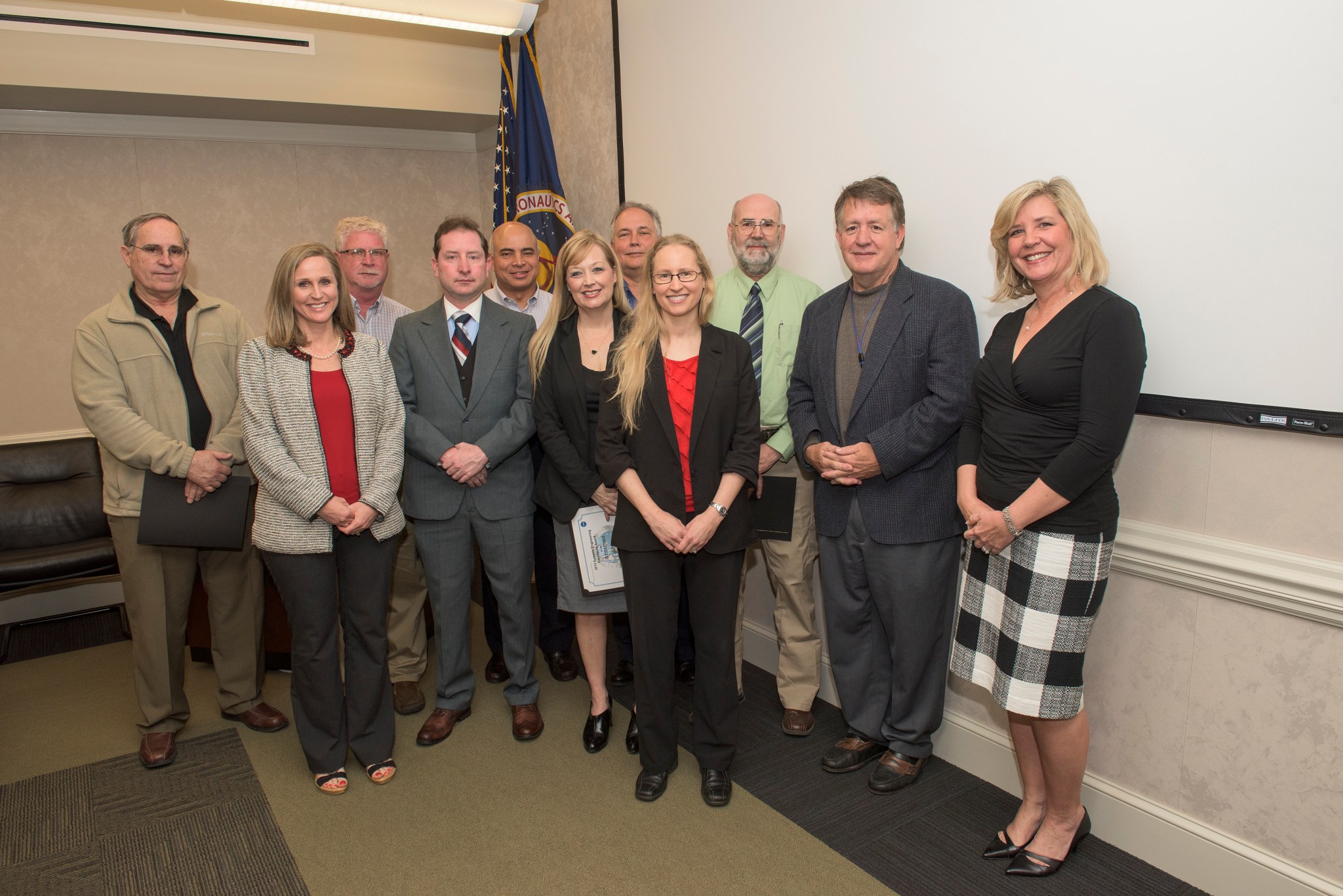
Teams at NASA’s Marshall Space Flight Center earned two of the six NASA Systems Engineering Technical Excellence Awards for 2015 presented on March 31 by the agency’s Office of the Chief Engineer. Marshall’s 3-D Print Project team, which tested and managed the 3-D printing in zero-G technology demonstration aboard the International Space Station, was among four winners in the program/projects category. NASA Chief Engineer Ralph Roe presented the awards to a representative of each team during a NASA Engineering Management Board video teleconference. Team members and Marshall engineering leadership at the presentation include, from left, Don Shannon, Sharon Manley, Phillip Hall, Gordon Deramus, Richard Bathew, Niki Werkheiser, Bruce Wallace, Jennifer Edmunson, Richard Ryan, Engineering Director Preston Jones and Chief Engineer for Systems Engineering Renee Cox. Team members not pictured are Mallory Johnston, Chris Butler, Brent Knight and Phillip Bryant. (NASA/MSFC/Fred Deaton)
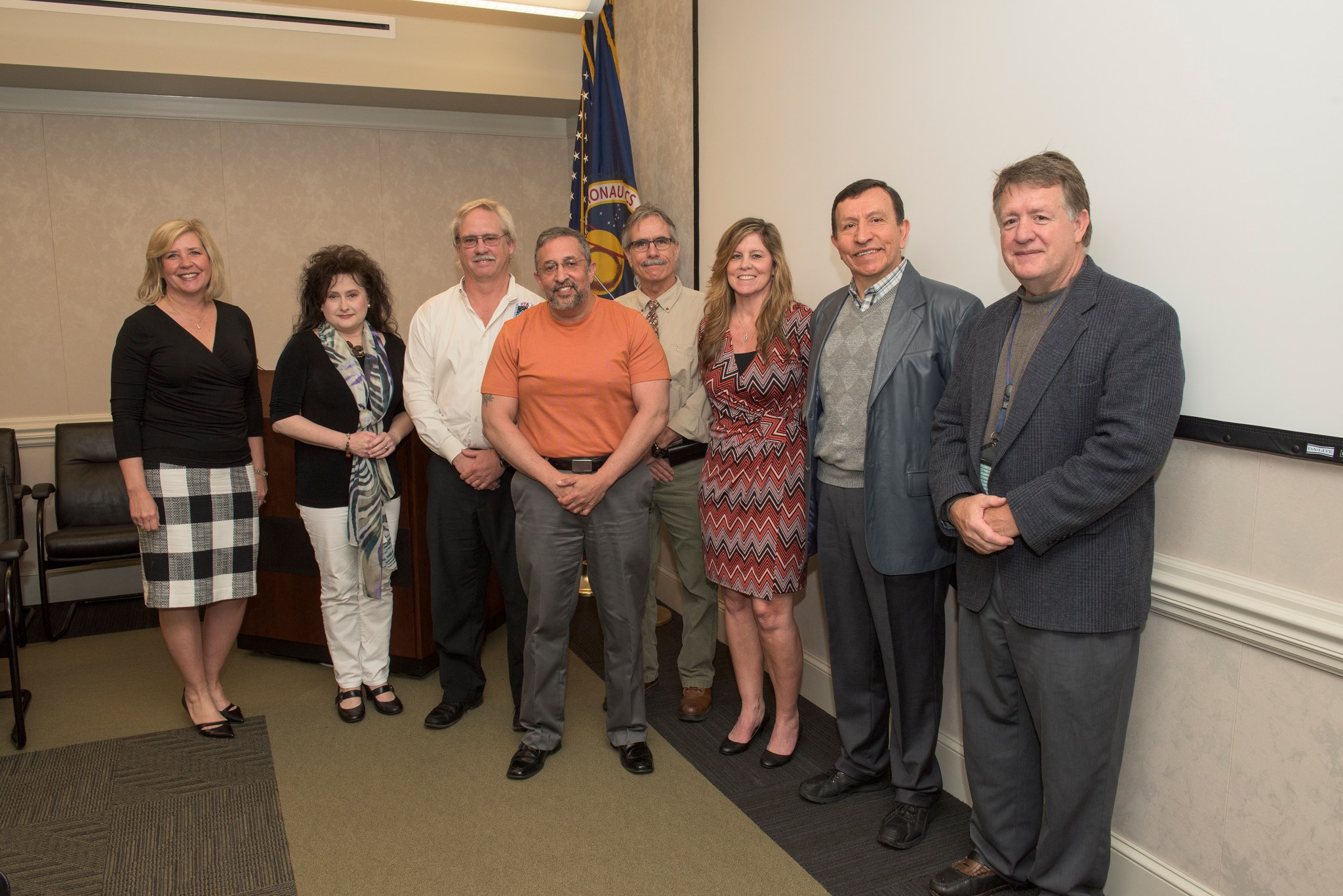
Marshall’s Program Management and Systems Engineering Customization Tool team was one of two winners in the techniques/methodology category. The team developed and deployed a unique customization tool to integrate all of Marshall’s program or project and systems engineering requirements and best practices into a single, interactive source. Team members and Marshall engineering leadership at the presentation include, from left, Chief Engineer for Systems Engineering Renee Cox, Joan Presson, Walt McGregor, Vic Alfaro, Van Blankenship, Marjie Davis, Alberto Duarte and Engineering Director Preston Jones. Team member Dave Mobley is not pictured. (NASA/MSFC/Fred Deaton)
Notable Speakers Conclude Marshall’s Women’s History Month Events
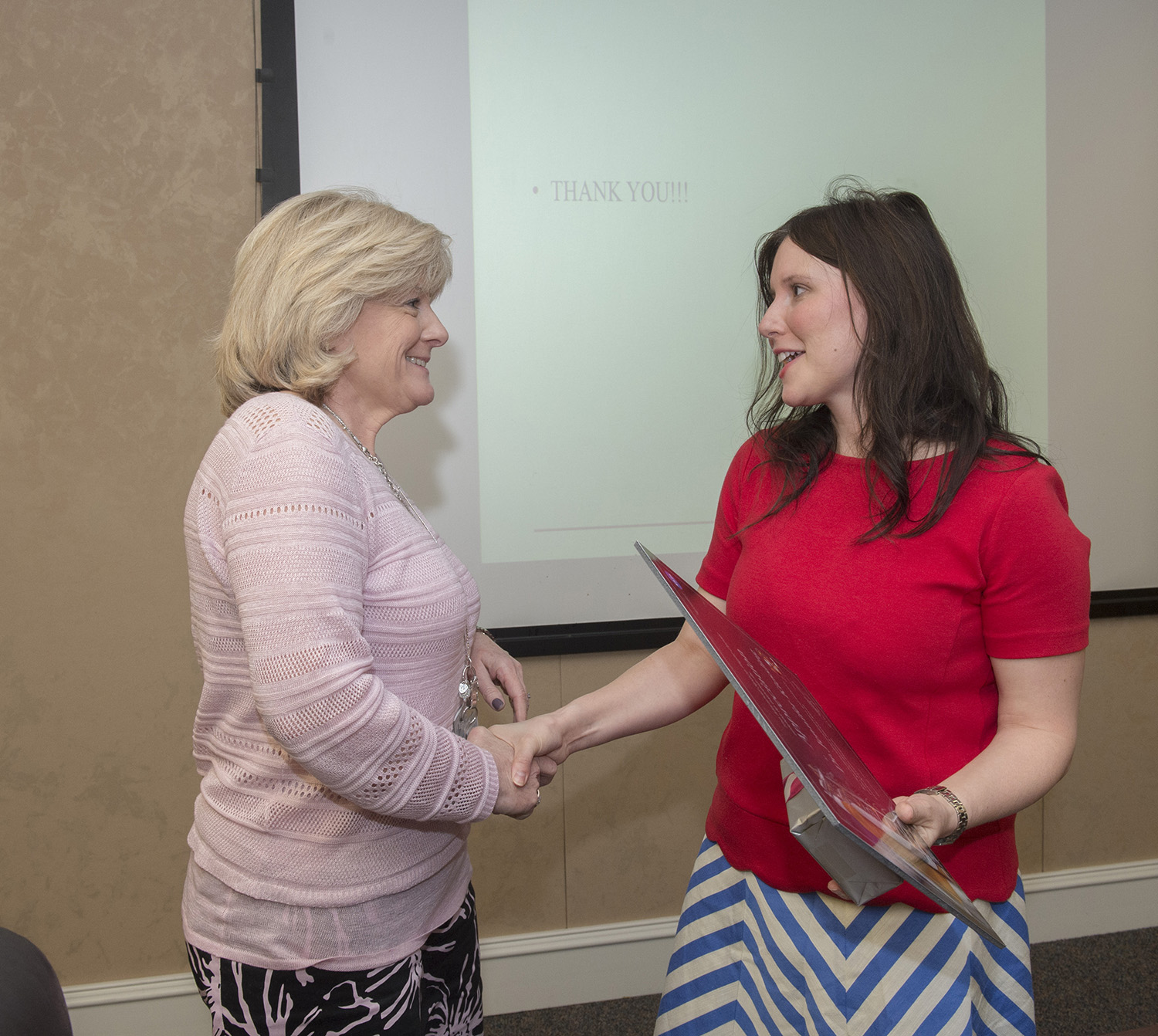
Dr. Jennifer Kiessling, right, is welcomed to NASA’s Marshall Space Flight Center March 30 by Marshall Deputy Director Jody Singer. Kiessling, a cardiologist at the Huntsville Cardiovascular Clinic, was the guest speaker at a Lunch-and-Learn on the subject of “Women and Heart Disease,” part of Marshall’s commemoration of Women’s History Month. She offered insight into the dangers of stroke and heart disease and provided prevention tips and methods of detecting early signs of the conditions. (NASA/MSFC/Emmett Given)
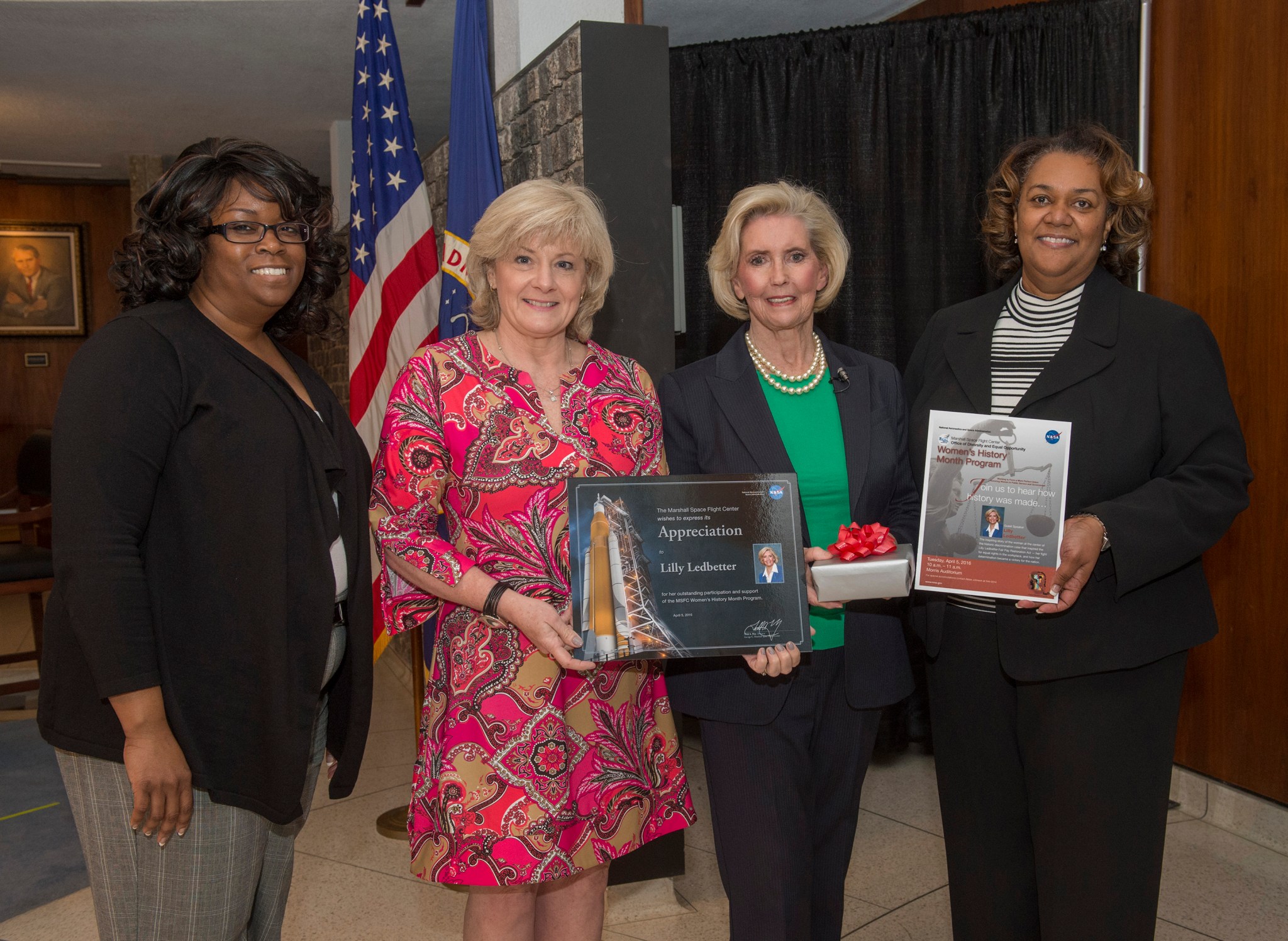
Women’s equality activist Lilly Ledbetter, second from right, is presented with a certificate of appreciation by Marshall Deputy Director Jody Singer, second from left. Ledbetter, a native of Jacksonville, Alabama, addressed Marshall team members April 5 in Morris Auditorium in Building 4200, closing out Marshall’s Women’s History Month celebration. Ledbetter’s 20-year experience as a worker and manager at Goodyear Tire and Rubber Co. in Gadsden, Alabama, led her to file an employment discrimination suit against the company in 1998. The suit eventually reached the U.S. Supreme Court and led to congressional passage of the Lilly Ledbetter Fair Pay Act of 2009, an amendment to the Civil Rights Act of 1964, which revised the statute of limitations for filing a pay discrimination lawsuit. Ledbetter and Singer are joined by Audrey Robinson, left, Marshall’s chief counsel, and Lybrease Woodard, right, deputy manager of Marshall’s Mission Operations Integration Laboratory. Women’s History Month events at Marshall are organized by the Office of Diversity & Equal Opportunity. (NASA/MSFC/Emmett Given)
Simplified Acquisitions Transitioning to the NSSC
In May, NASA will begin the transition of a select scope of simplified acquisitions from the field centers to the NASA Shared Services Center.
“Simplified acquisitions” is a term used to describe the policies and procedures used to acquire commodities and services, including research, development and commercial items.
Most acquisitions do not exceed $150,000, or the Simplified Acquisition Threshold. By consolidating and transitioning activities below the SAT to a single location, contracting officers at each center will be allowed to focus on larger, more complex contracts and leaders will have the ability to obtain real-time status reports on all SAT activities.
Information tracked and compiled by the NSSC can be used more strategically to develop additional tools and contractual vehicles to acquire more of the agency’s high-volume, repetitive purchases, which will help NASA achieve strategic sourcing goals set by the Office of Management and Budget.
The transition will be conducted in four waves beginning with NASA’s Marshall Space Flight Center in May and will be completed for all centers by the end of the calendar year. SAT purchases made by institutional support contractors are not included in the transition of simplified acquisitions to the NSSC.
For more information on the transition please visit the SAT Web page, which includes FAQs as well as detailed information about which acquisitions will be remaining at the centers in the “NSSC Scope” section.
This Week in NASA History: STS-37 Crew Deploys Compton Gama-Ray Observatory — April 8, 1991
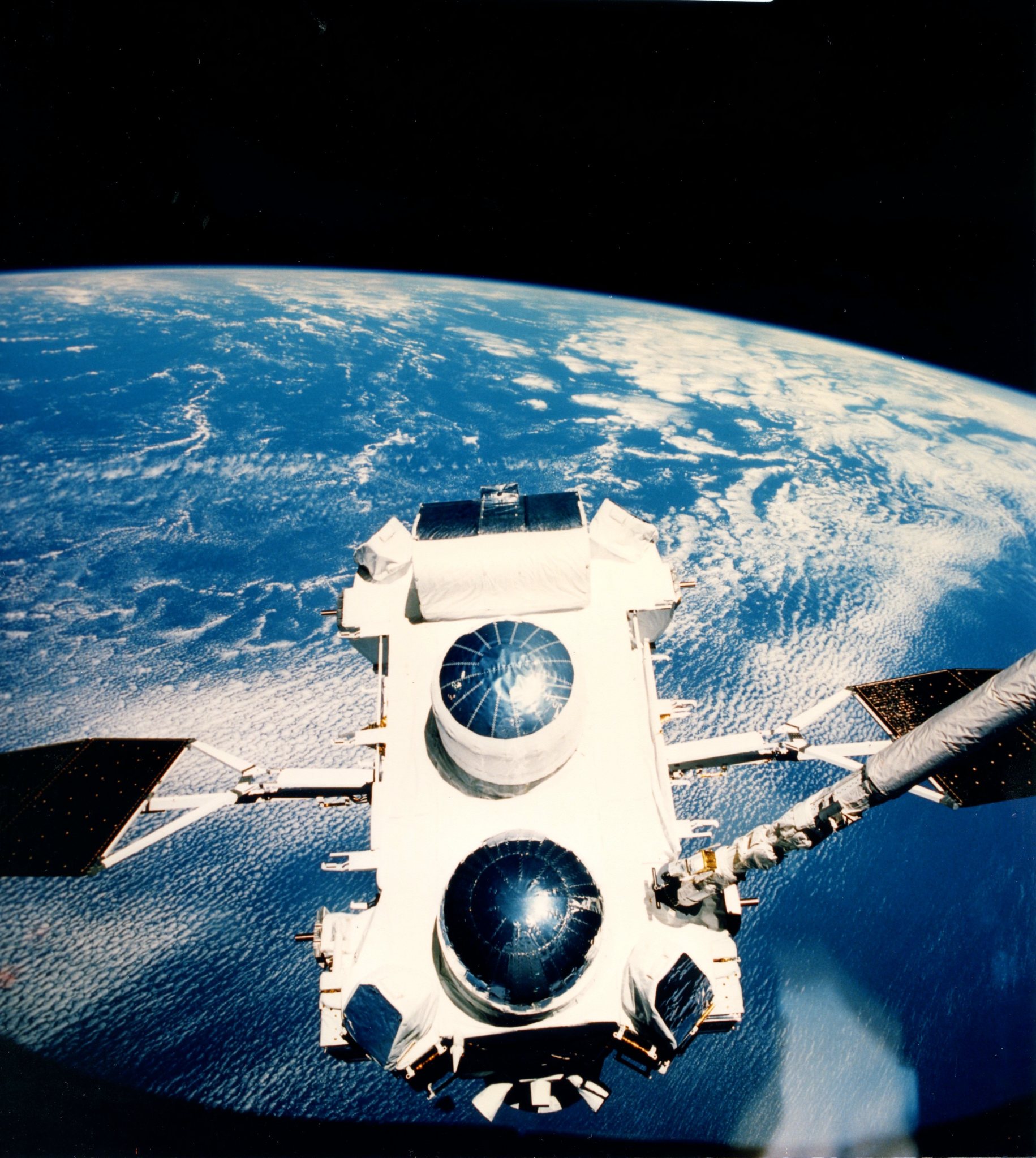
This week in 1991, the Compton Gamma-Ray Observatory was deployed, above, by the Remote Manipulator System arm aboard space shuttle Atlantis during STS-37. For nearly nine years, the GRO Burst and Transient Source Experiment — designed and built by NASA’s Marshall Space Flight Center — kept an unblinking watch on the universe to alert scientists to the invisible, mysterious gamma-ray bursts that had puzzled them for decades. The gamma-ray instrument was one of four major science instruments aboard the Compton. Thirty-seven universities, observatories and NASA centers in 19 states, and 11 more institutions in Europe and Russia, participated in the BATSE science program. The GRO reentered Earth’s atmosphere and ended its successful mission in June 2000. The NASA History Program documents and preserves NASA’s remarkable history through a variety of products — photos, press kits, press releases, mission transcripts and administrators’ speeches. For more pictures like this one and to connect to NASA’s history, visit the History Program’s Web page. (NASA)
Milestone Completion of NASA ‘Green’ Mission Featured on ‘This Week @NASA’
The successful completion of a major flight readiness milestone for NASA’s Green Propulsion Infusion Mission is featured in the latest edition of “This Week @NASA,” a weekly video program broadcast nationwide on NASA-TV and posted online.
Last week, NASA’s GPIM marked the successful completion of functional and environmental testing of its systems and software. The milestone is a major step for the mission, which is scheduled for launch in early 2017, to demonstrate the practical capabilities of using a greener, less toxic propellant than the hydrazine fuel used as a propellant by many spacecraft.
The GPIM payload will fly to space aboard a small satellite or “smallsat.” During the test flight, researchers will conduct orbital maneuvers to demonstrate the performance of the propellant during attitude control maneuvers, changes in orbital inclination and orbit lowering.
GPIM is managed by NASA’s Technology Demonstration Missions program office at the Marshall Space Flight Center and funded by NASA’s Space Technology Mission Directorate.
View this and previous episodes at “This Week @NASA” or at https://www.youtube.com/user/NASAtelevision.
Obituaries
Victor S. Grimes, 95, of Huntsville, died March 27. He retired from the Marshall Center in 1976 as a management information specialist.
Bobby E. Cothren, 83, of Meridianville, Alabama, died April 4. He retired from the Marshall Center in 1988 as a materials engineering technician. He is survived by his wife, Doris Cothren.
John E. Farmer, 78, of Huntsville, died April 5. He retired from the Marshall Center in 1998 as an aerospace engineer. He is survived by his wife, Peggy Farmer.


























